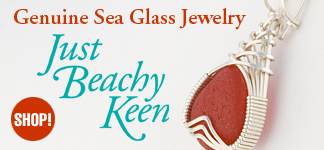Glass from the Roosevelt Inlet Shipwreck
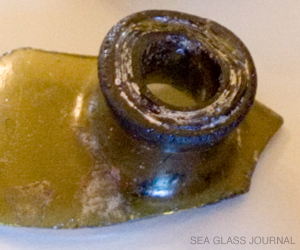
A sea glass bottle top from an 18th Century case gin bottle.
A shipwreck reveals its pottery and sea glass secrets after more than 200 years under water
In 1774, Captain James Hathorn was sailing the cargo ship Severn from Bristol, England to its home port in Philadelphia. It was carrying goods the colonists would need, including household items and building supplies. The ship ran into a nor'easter and ran aground. It was reported that the crew survived. However, on May 11, 1774 the Pennsylvania Gazette reported that the Severn was "ashore in our bay full of water and is thought will be lost."
It was not until Fall 2004, while the U.S. Army of Corps of Engineers were doing some beach replenishment along the Delaware Bay, a dredge sucked up many old artifacts and scattered it along the Lewes beach. Several beachcombers started finding these artifacts.
Story continues below...
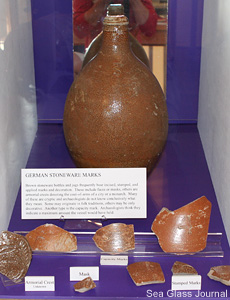
A brown stoneware jug and bottle shards that often were found to bear incised, stamped and applied marks and decoration.
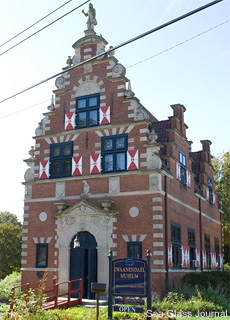
The Zwaanendael Museum in Lewes, Delaware houses many of the artifacts recovered from the shipwreck.
The state contracted Southeastern Archaeological Research Inc., to explore the site and see if they could determine anything about the shipwreck and where these items originated. Some of the item found were trademarked stoneware bottles from Germany and case bottles and round bottle glass from Great Britain and Europe.
Other items found were personal items such as buttons, tobacco pipes, household, kitchen, dining wares and decorative metal objects.
"Approximately 56,000 artifacts from Lewes Beach have been donated..."
Approximately 56,000 artifacts from Lewes Beach have been donated to the Delaware Department of State. A large selection of artifacts recovered from the Roosevelt Inlet Shipwreck site are on display at the Zwaanendael Museum in Lewes.
From a sea glass collector's perspective, the glass that washes up on the Lewes Beach that I have found is not like most sea glass. It is very thin and has an olive green color with a thin iridescent covering that flakes off when dry. It is said to be caused by the minerals in the ocean water. To preserve the unique surface quality, I spray a clear top coat protective finish over the glass, which will darken it about one shade.
According to the Delaware Division of Historical and Cultural Affairs (HCA) the shipwreck's origin remains uncertain, as the critical architectural components of the wreck are missing. The vessel is thought to be the remains of a British commercial ship, possibly the Severn, which would be the oldest-known shipwreck discovered in Delaware waters. The wreck site was listed in the National Register of Historic Places on November 16, 2006.
— This article is an excerpt taken from Buckler's Sand N Stones blog. The full story can be found by clicking Roosevelt Inlet Shipwreck.
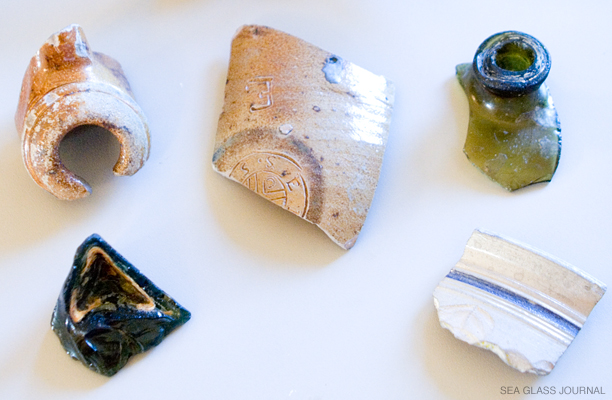
Sea glass and stoneware artifacts from the Roosevelt Inlet Shipwreck.





